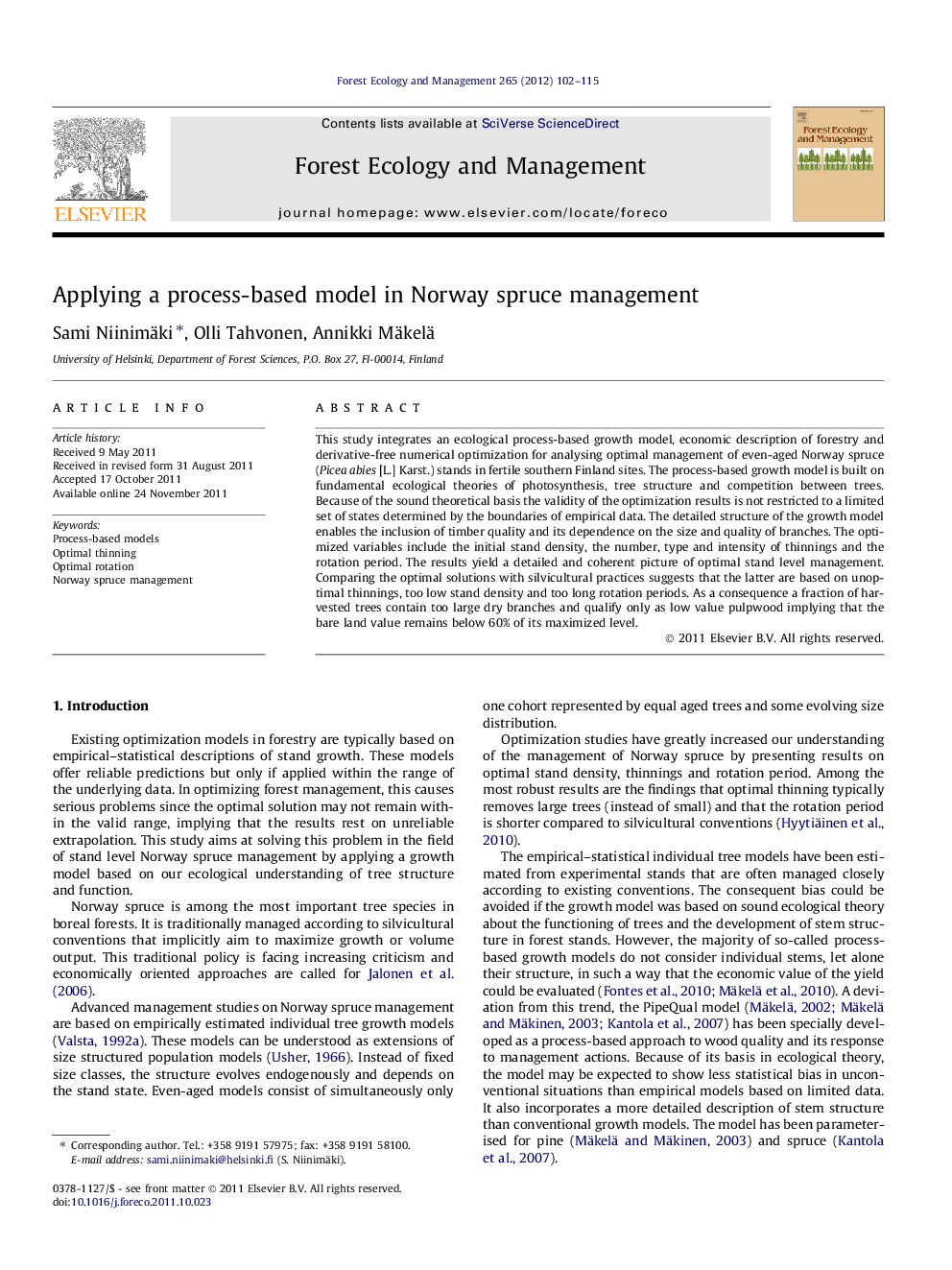| کد مقاله | کد نشریه | سال انتشار | مقاله انگلیسی | نسخه تمام متن |
|---|---|---|---|---|
| 87563 | 159256 | 2012 | 14 صفحه PDF | دانلود رایگان |

This study integrates an ecological process-based growth model, economic description of forestry and derivative-free numerical optimization for analysing optimal management of even-aged Norway spruce (Picea abies [L.] Karst.) stands in fertile southern Finland sites. The process-based growth model is built on fundamental ecological theories of photosynthesis, tree structure and competition between trees. Because of the sound theoretical basis the validity of the optimization results is not restricted to a limited set of states determined by the boundaries of empirical data. The detailed structure of the growth model enables the inclusion of timber quality and its dependence on the size and quality of branches. The optimized variables include the initial stand density, the number, type and intensity of thinnings and the rotation period. The results yield a detailed and coherent picture of optimal stand level management. Comparing the optimal solutions with silvicultural practices suggests that the latter are based on unoptimal thinnings, too low stand density and too long rotation periods. As a consequence a fraction of harvested trees contain too large dry branches and qualify only as low value pulpwood implying that the bare land value remains below 60% of its maximized level.
► Optimal Norway spruce management is analyzed using a process-based model.
► Optimal thinnings are light and mostly from above.
► Optimized thinnings increase volume yield.
► Silviculture recommendations deviate from optimal solutions.
Journal: Forest Ecology and Management - Volume 265, 1 February 2012, Pages 102–115